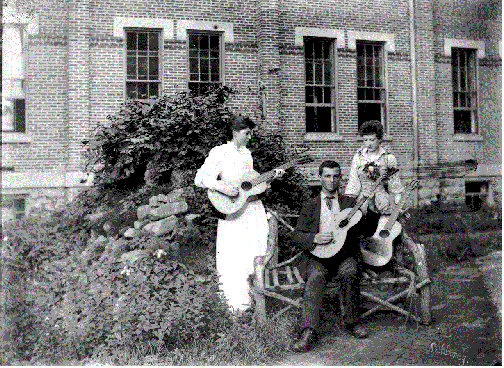
Leisure Time at Southwestern Lunatic Asylum, circa 1890, courtesy Southwestern Virginia Mental Health Institute
Around the time of the Civil War, alienists were still hammering out the best ways to treat the mentally disturbed. Asylums were much more common, and a great majority of alienists felt that removal to one would benefit most patients more than home care. What they particularly stressed was an immediate change of scenery–either to an asylum or by travel–for a patient in the first stage(s) of insanity. By getting this person away from the environment that had brought on the problem, doctors could often snap the person out of the state of mind causing the insanity.
Labor of some kind was also beneficial for the physical health and mental recovery of the insane, which led most asylums to set up gardening and workshop programs for their patients. The author (Dr. J. Parigot) of an 1864 article “General Mental Therapeutics,” did stress that labor must be voluntary. “Free-will labor has the advantage that patients instinctively choose occupations in accordance with their state of health,” Pargot noted. But he also gave the following caveat: “. . . patients ought never to be converted into machines and tools for private speculation.” He was very much against using patient labor to keep down expenses so that an asylum could be self-paying or profitable.

Interior of Shoe Shop, Willard Asylum for the Insane
Unfortunately, therapeutic labor soon came to include drudge work and difficult farm and dairy tasks that most patients probably did not enjoy. As asylums took in more patients with less per capita state funding, they had to rely on patient labor to offset the costs of food and other goods.

Patients Picking Cotton at Alabama Insane Hospital
My next post will continue to discuss therapeutics during the Civil War era.